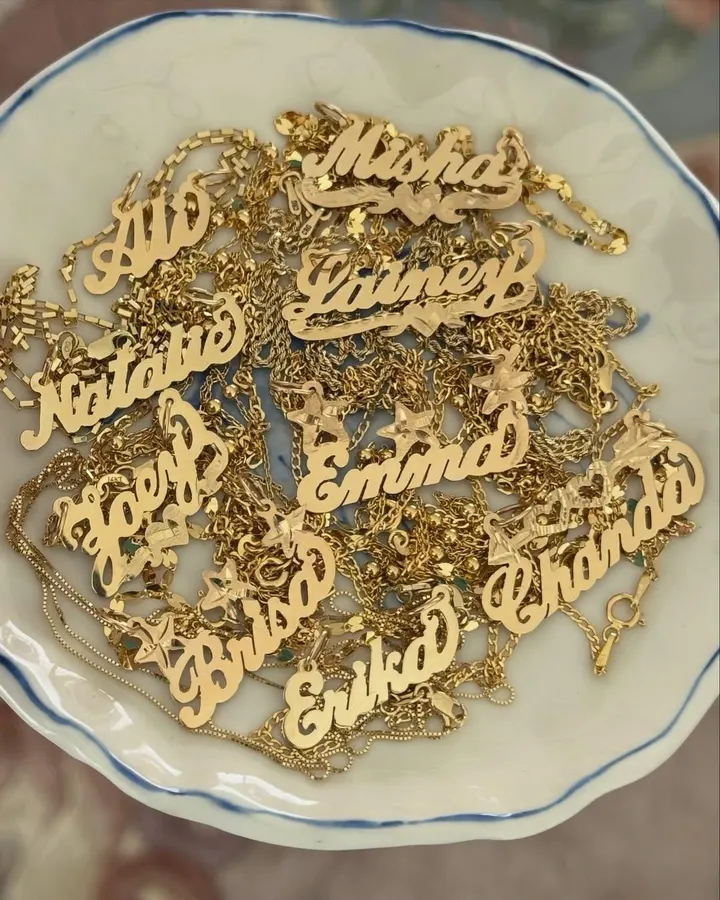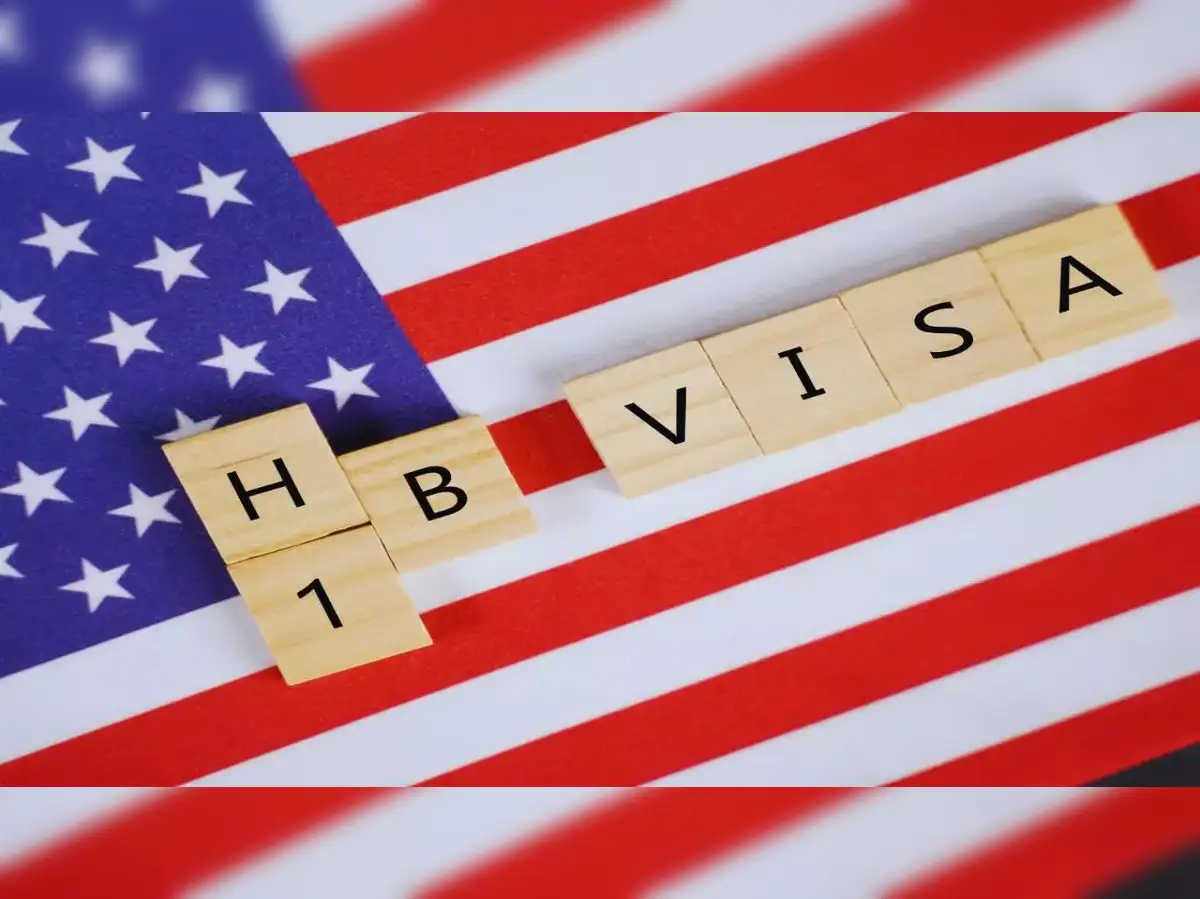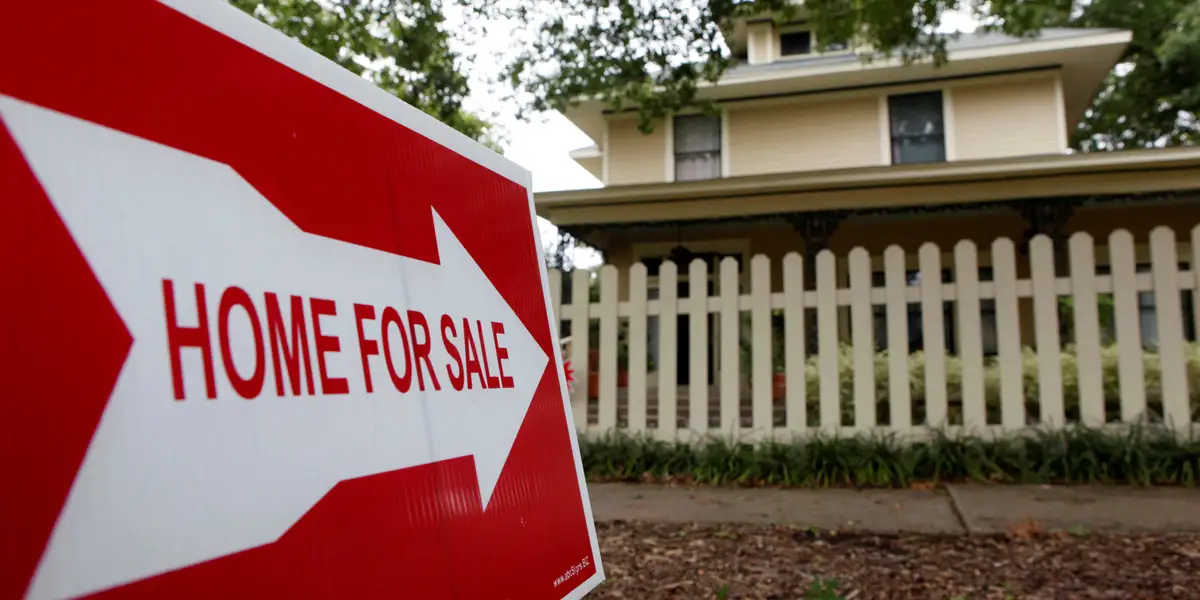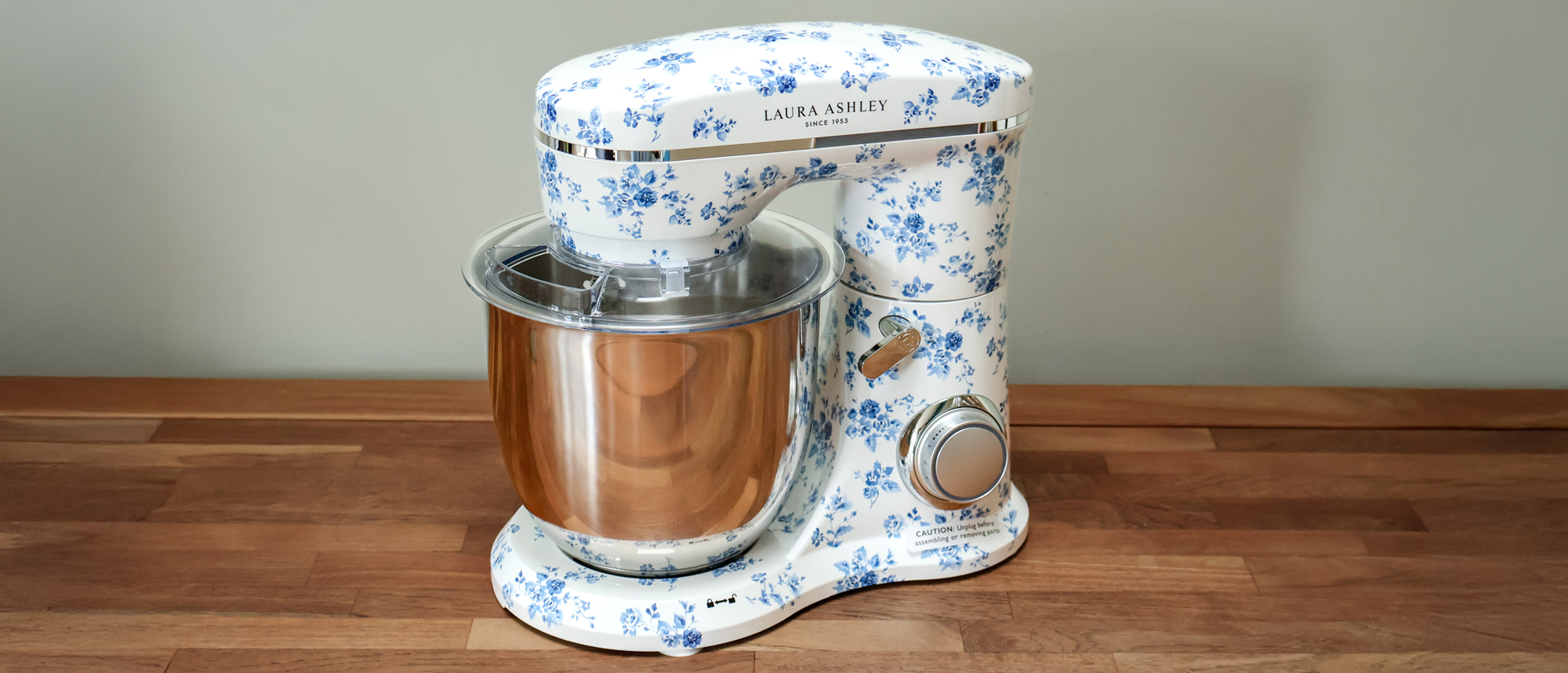By Contributor,Tiana Randall
Copyright forbes

Yeah It’s Jewelry
Courtesy of Yeah It’s Jewelry
In Los Angeles, trends seem to appear and latch on fast with no real backing. One minute is a $20 Erewhon smoothie with a celebrity’s slapped on it, and the next is a fitness class blessed by every wellness influencer. From GLP-1 injectables to cold plunges, L.A. has a way of turning personal choices into public movements. The latest fixation? Pure gold jewelry. From Devon Lee Carlson to Sabrina Carpenter to Addison Rae, it feels like everyone in L.A.—models, influencers, even baristas—is wearing the same hyper-specific pure gold nameplate necklace from Yeah It’s Jewelry.
Nameplates aren’t new. They’ve been a staple in Black and Latino communities for decades. But what is it about the Yeah It’s Jewelry nameplates that has L.A in a chokehold? These aren’t your average script nameplate necklaces. Each piece is customized with signature motifs, such as lovebirds, hearts, stars, and swirled banners, accenting the lettering like little personal stamps of identity. It’s the kind of detail that makes them instantly recognizable on the necks of popstars like Addison Rae and baristas at Community Goods.
“I got really drawn to the history of jewelry and design,” Chloe Weitman, founder of Yeah It’s Jewelry says. “Jewelry can represent so much about a person. It tells stories, whether it’s highend noble jewelry from the past or just a charm from your mom’s collection. Either way, it says so much about a time or person.”
Weitman, who self-describes as a lifelong jewelry lover, says it’s “Not just because it’s shiny and expensive,” she says, “but because I did a lot of designing, beading and crafting as a kid.” Still, it wasn’t until her time studying Art History at USC that her fascination with jewelry deepened into something more academic and more personal.
Yeah It’s Jewelry
Courtesy of Yeah It’s Jewelry
MORE FOR YOU
During the height of the pandemic, Chloe Weitman found herself combing through the vintage charm bins of L.A.’s jewelry district and posting her finds online. “I was like, let’s just see who wants them,” she says. With $500 in hand, withdrawn from an ATM and, in her words, “a true investment” she made her first drop. “I told myself, if no one buys these, I’ll be okay losing this money.”
Luckily for her, they did buy. All of it. The charms sold out, and with that, she began building a small but loyal client base. At the time, Weitman was working as an art coordinator by day. But it didn’t take long before her side hustle started pulling in more income than her 9-to-5. “I just thought, what if I actually put my all into this?” she asked.
She ran the business out of her apartment until 2024: packing orders, sourcing pieces, and growing an audience one drop at a time. “I took the profit from that first drop and went right back to buy more charms,” Weitman says. “It was truly a rinse-and-repeat operation.”
Founder of Yeah It’s Jewelry Chloe Weitman
Courtesy of Yeah It’s Jewelry
Of course, there were growing pains that came with being a first-time jeweler. “The price of gold is mainly determined by weight,” Weitman explains. “Obviously, I’m not buying pieces at the exact melt price of the day, jewelers need to make their profit too.”
Still, her ethos was clear from the beginning: seek out pieces that are worth more than their weight in gold—literally. “I look for craftsmanship, the design, the detail. That’s what makes a piece special.”
She became obsessed with the hunt, sifting through piles of vintage charms and gold chains in the jewelry district. “You start to learn what’s mass-produced and everywhere versus what’s one-of-a-kind, or likely handmade,” she says. She credits her Art History background for sharpening that eye, along with her jeweler, who now crafts the brand’s signature nameplates.
From the start, Weitman’s brand philosophy has been refreshingly straightforward: move good pieces fast. “I’d rather find the item, sell it, and get it into its new home quickly,” she says. “Versus tripling the price I paid for it and thinking, ‘Ooh, maybe if it sits long enough, someone will eventually pay that super premium price.’”
According to Weitman, it was the “urgency toward vintage” that drew people in and created early buzz around Yeah It’s Jewelry. What set her drops apart were the pieces themselves: high-quality, one-of-one charms that were kitschy, playful, tongue-in-cheek, and sometimes even a little creepy. And then there were the nameplates: smooth, high-polished, diamond-cut gold that wasn’t being sourced or sold anywhere else.
From there, she began building not just a business, but a brand identity. A key part of that identity? A commitment to pure gold. No plating, no filler. Just solid pieces with substance and personality.
In a space dominated by brands like The M Jewelers, Mejuri, and others leading the Gen Z jewelry market with gold-plated vermeil and laser-cut, mass-producible pieces, Weitman is taking a different route.
“I’ll never sell anything plated,” she says. “Not because I don’t think it’s beautiful—but because the mission of Yeah, It’s Jewelry is about proving that solid gold doesn’t have to cost thousands.”
Addison Rae wearing Yeah It’s Jewelry
Courtesy of Interview Magazine
“It’s empowering for women to own something solid gold, and to understand what that means,” she says. “It’s about educating people that it’s better to buy nice than buy twice.”
“Gold-plated jewelry is my biggest ick,” Weitman says bluntly. “I get really frustrated seeing things like a pair of Bottega Veneta hoops, for example—big, chunky gold hoops for $3,000. You see that price, you see the gold tone, and most people just assume, oh, it’s luxury, so it must be real gold.”
But more often than not, it’s isn’t. “You read the description and it sounds great… until you get to the part that says ‘18k gold plated,’” she says. “At that point, you’ve spent serious money—money that could’ve gone toward actual solid gold, had the piece not had the designer name stamped on it.”
For Weitman, Yeah It’s Jewelry has grown past just a place to shop but it’s also a platform for education. She’s constantly teaching her customers about carats, cuts, and how to spot quality. She even breaks down how to recycle gold jewelry and get your money’s worth. But what she will not do is take credit for her famed nameplates.
The nameplate necklace originated in Ancient Egypt, personalized amulets and cartouche necklaces inscribed with hieroglyphics were worn not only as talismans of protection but as affirmations of identity in the afterlife. This intimate connection to personal narrative continued through Ancient Rome and Greece, where signet rings and engraved jewelry were the marks of family heritage and social standing. Fast forward to the 1970s and ’80s, the nameplate necklace was reborn as a symbol of money, family, and distinction within Black and Latino communities in America’s city centers, especially among women. It was a signifier that, not only could you afford gold, but that you can get afford custom jewelry.
The nameplate’s resonance was amplified by the rise of hip-hop culture, which embraced oversized chains and personalized plates etched with monikers like “Puerto Rican Princess,” and “Baby Girl.” Even on TV, Carrie Bradshaw, famously wore a “Carrie” nameplate necklace, which she self described as “ghetto gold” in an episode of Sex and the City.
Yeah It’s Jewelry
Courtesy of Yeah It’s Jewelry
Weitman launched her nameplate collection in 2022 after years of focusing exclusively on vintage pieces. The custom nameplates were the first truly personalized items she brought into the Yeah It’s Jewelry lineup. “It was really exciting for people, the concept of something being made like truly just for you. So I always wanted to do that while making sure I’m navigating selling them in a thoughtful way and not like taking any ownership or trying to, like, claim to have invented any type of style,” she says.
Yeah, It’s Jewelry, which relies mainly on 10 styles for its nameplates, selects them from her designer’s catalog in the L.A. jewelry district, with whom she works very closely. Those 10 styles are “very standard, classic styles and I really have never claimed or would never want to claim to have invented any of these styles or even popularize them,” she says.
“I just want people to know, if you want a good quality nameplate, it’s gonna be handmade. We’re gonna, like, look it over for you too and make sure all the finishes are right. The bails closed and make sure all the final details are there. That’s why people come to us.”
That, in part of it’s popularity, is also due to its’ in-person popups. “We all know during COVID, everyone was craving human connection,” Weitman says. “So it’s been really special for people to meet in person, feel the jewelry, and connect with other jewelry lovers.”
“I’ve truly built something that exists beyond Instagram,” she adds. With a HQ in Los Angeles, a showroom in Santa Monica, and a team of five employees she hired through those very pop-ups, Yeah It’s Jewelry is growing fast. These days, she’s “no longer fulfilling orders out of my apartment.”
In the name of world-building, Weitman’s brand has also quickly become synonymous with it-girls. Whether they’re the ones she gifts to, the women who buy the pieces, or those who model for Yeah It’s Jewelry. She’s built a roster of influencers and tastemakers with their own followings who have come to represent the brand organically — Sabrina Carpenter being one them.
“I think that playfulness is what makes a Yeah It’s Jewelry girl,” Weitman says. “Also, they’re jewelry lovers, they’re not just wearing it for an Instagram photo. They’re sleeping in it, wearing it every day, it’s their daily necklace.”
Ever the student, Weitman is continually deepening her craft. After graduating from USC, she enrolled in the Gemological Institute of America, pursuing an AJP (Accredited Jewelry Professional) degree. She’s also an active member of a women’s entrepreneurship group focused on jewelry design. Looking ahead, her vision for Yeah It’s Jewelry is refreshingly simple: “I just want to make art with my friends.”
Editorial StandardsReprints & Permissions



